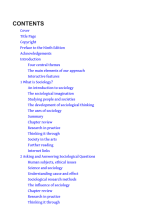Early Renaissance in Northern Europe - Flemish Oil Painting - Robert Campin
4 important questions on Early Renaissance in Northern Europe - Flemish Oil Painting - Robert Campin
Who was the Master of Flémalle, when did he live and what are his most important works?
- Alias of Robert Campin, who was a painterand member of both the Tournai painters' guild and city council.
- He lived from ca. 1375-1444.
- His most important work is the Mérode Altarpiece (1426).
- What is he name of this triptych?
- When and by whom was it painted?
- Why was this painting so innovative (2 reasons)?
- Meróde Altarpiece.
- Painted around 1426 by Robert Campin (Master of Flémalle).
- Innovative because:
- It has illusions of texture and atmosphere because of the innovative use of Oil paint instead of (only) egg tempora, that was favored in the middle ages.
- First known painting where the Annunciation is depicted in a middle class Flemish home, instead of the usual church or holy realm.
- I.e., Traditional religious subjects being combined with an accurate oberservation of daily life.
- With what paint is this triptych made?
- What do we see on this triptych?
- How does the style it reflect its time.
- Campin used a mixed technique, using egg tempera for the underpainting and proceeding immediately to paint over it in oil.
- It depict the Annunciation taking place in a middle class, 15th century Flemish home.
- The painting still echoes medieval conventions (large size Mary & Gabriel), but combines this with a matter-of-fact attention to details and reality (which we see in the Renaissance).
- Higher grades + faster learning
- Never study anything twice
- 100% sure, 100% understanding
What is so interesting about the details in the works of Robert Campin (1375-1444)?
The question on the page originate from the summary of the following study material:
- A unique study and practice tool
- Never study anything twice again
- Get the grades you hope for
- 100% sure, 100% understanding































